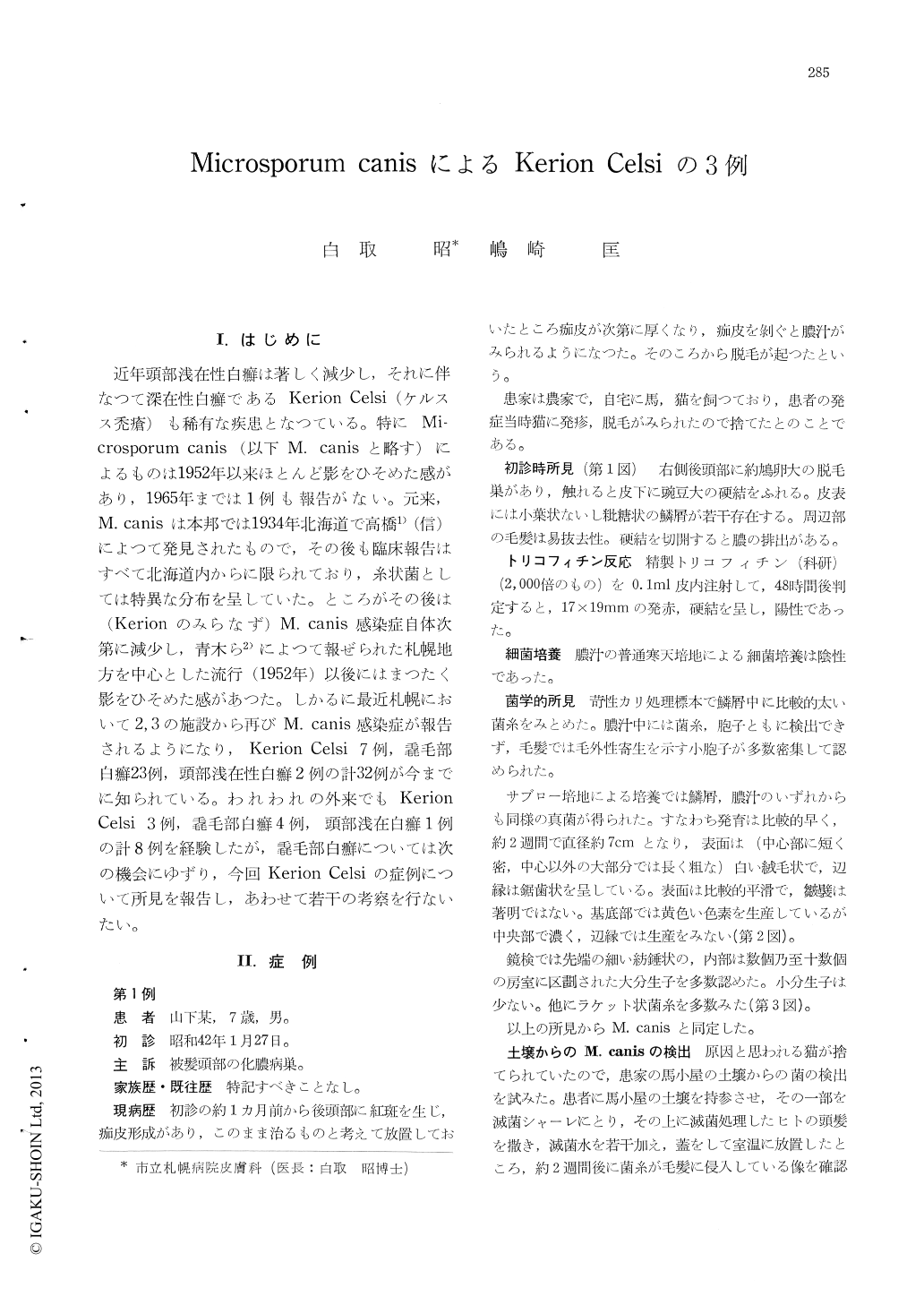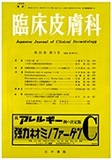Japanese
English
- 有料閲覧
- Abstract 文献概要
- 1ページ目 Look Inside
I.はじめに
近年頭部浅在性白癬は著しく減少し,それに伴なつて深在性白癬であるKerion Celsi (ケルスス禿瘡)も稀有な疾患となつている。特にMi-crosporum canis (以下M.canisと略す)によるものは1952年以来ほとんど影をひそめた感があり,1965年までは1例も報告がない。元来,M.canisは本邦では1934年北海道で高橋1)(信)によつて発見されたもので,その後も臨床報告はすべて北海道内からに限られており,糸状菌としては特異な分布を呈していた。ところがその後は(Kerionのみらなず) M.canis感染症自体次第に減少し,青木ら2)によつて報ぜられた札幌地方を中心とした流行(1952年)以後にはまつたく影をひそめた感があつた。しかるに最近札幌において2,3の施設から再びM.canis感染症が報告されるようになり,Kerion Celsi 7例,毳毛部白癬23例,頭部浅在性白癬2例の計32例が今までに知られている。われわれの外来でもKerionCelsi 3例,毳毛部白癬4例,頭部浅在白癬1例の計8例を経験したが,毳毛部白癬については次の機会にゆずり,今回Kerion Celsiの症例について所見を報告し,あわせて若干の考察を行ないたい。
Three boys of 7, 8, and 10 years old infected with kerion caused by M. canis were reported. Cats were suspected as a source of infection. M. canis was found from soil in a stable attached to the patient's house. Small spores surrounding a degenerated hair were detected in an abscess in a histological specimen from two cases. Bacteriological cultures were nega-tive in all of the patients.
There was an epidemic of M. canis in Sapporo district from 1952 to 1954. After that time there was no case of this infection. But recently, sporadic infectionhas occurred, which sugge-sted the beginning of the second epidemic.

Copyright © 1969, Igaku-Shoin Ltd. All rights reserved.


